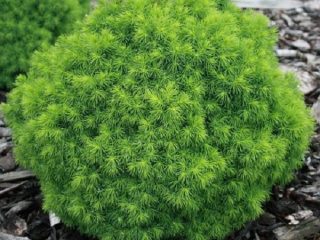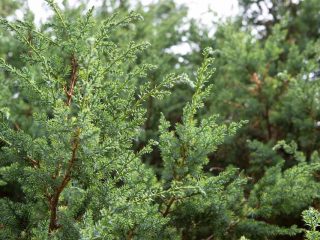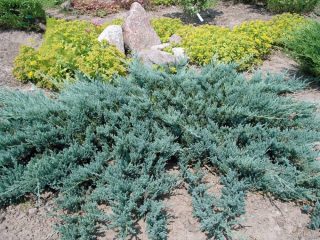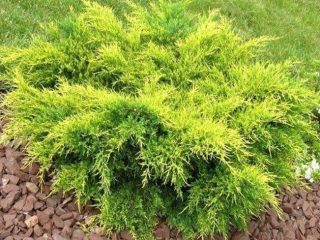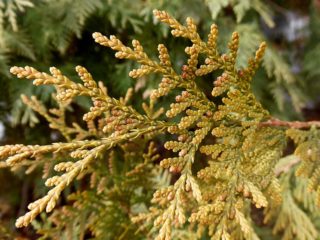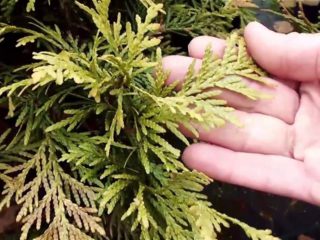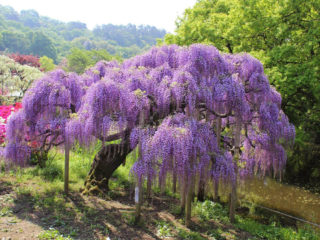Content
Holly, also called holly or common holly, is a perennial poisonous tree from the holly family. It is found in warm countries of Asia, Africa and Europe, although if certain rules are followed, it can also be grown in Russia. A description of the species, basic tips for planting and care can be found in this article.
What does holly look like and where does it grow?
Holly holly is an evergreen tree; in nature it grows up to 15-25 m, while the trunk is not very thick, reaching 50-80 cm in diameter. The bark is quite smooth, gray in color. The holly tree is called differently by several names:
- prickly oak;
- Pandora;
- ilex;
- Swabian thorn.
The main name “holly” is associated with the special shape of the leaf blade. It is quite wide, light or dark green in color, and covered with wax. But the most important feature is the presence of notched edges and hard short spikes. They are noticeably prickly and pose a certain danger.
The outer surface is shiny and shimmers beautifully in the sun, the bottom is matte and lighter. The shape of holly leaves is ovoid or elliptical, they are arranged alternately. They reach a length of 5-12 cm, and a width from 2 to 6 cm. In some species, there is a white border along the edges of the leaf blade.
How holly blooms
Holly holly flowers are white, small in size (up to 8 mm in diameter). They consist of four petals and are not particularly attractive in appearance. Flowering occurs from May to June. From September until the end of winter, fruits are formed - red rounded drupes. They can also be yellow or orange, somewhat reminiscent of hawthorn fruits. Each of them contains 4-5 seeds. The fruits are collected in small clusters that look beautiful against the overall dark green background.

Holly holly is attractive with beautiful berries and leaves
Winter hardiness of holly
Holly holly is unpretentious and grows normally even in the shade, although at a rather slow pace. However, not all varieties are winter hardy. Only a few representatives can withstand temperatures dropping to -22 degrees.
Therefore, in Russia, such a tree is grown in open ground only in the Lower Volga region, in the Black Earth Region, as well as in the North Caucasus and other southern regions.
In the middle zone, cultivation is risky - most often this is done only in heated winter gardens, where an acceptable temperature can be maintained. If the tree is small, it can be moved to an insulated balcony, providing diffused lighting. There is also data on the cultivation of holly on the Kuril Islands and Sakhalin.
Varieties
Holly holly is represented by 400 different varieties that are cultivated. Moreover, some of them are grown not only in tropical climates, but also in the temperate zone. The most common representatives in Russia are:
- Alaska - Holly holly with an interesting pyramidal crown. The foliage is dark green with sharp edges.
- Argentea marginalata is a variety of holly with variegated foliage (with a noticeable silvery border around the edges).
- Golden King is a rather tall holly, reaching 5 m. The foliage is two-colored, the crown is 1-1.5 m in diameter. The color ranges from emerald green to golden, as in the photo.
- White Cream is a variety of holly with marbled foliage. It grows as a small, compact bush of graceful shape.
- Pyramidalis is an interesting holly with a columnar crown, a very compact tree.
- Bakkiflava decorates the garden with light green leaves and orange fruits.
Planting holly in open ground
Holly holly can be called an unpretentious plant, but it is still better to take into account some rules for planting and care. The tree does well in partial shade and needs moisture. For decorative and sanitary purposes, it would not be superfluous to carry out regular pruning, as well as periodically apply fertilizers and loosen the surface layer of soil.
Landing dates
The planting of holly holly is planned for April, and seedlings with a closed root system are purchased so as not to touch or injure it. Adult representatives aged 3-4 years and older can be planted in the fall (in the south in open ground, in other regions - in a heated room).
Site selection
Holly holly grows best in partial shade and shady conditions. It is worth keeping in mind that varieties with variegated foliage need good lighting. For them, it is better to choose open places, and weak partial shade is quite acceptable even in this case.
If possible, it is better to plant holly near a pond, since the tree prefers to grow in conditions of high humidity. Another criterion is the absence of draft winds, which can dry out the leaves in the summer and lead to frostbite of the shoots in the winter.
Soil preparation
Like many other plants, holly develops normally in fertile and light soil with a slightly acidic reaction (pH 6 to 7). It is advisable to prepare the site six months before the intended planting. The main actions are:
- Dig and clean, mark holes for planting.
- Add compost or humus in the amount of 5-7 kg per m22.
- If the soil is dense, add sand or sawdust (1-2 kg for the same area).
How to Plant Holly
Holly holly produces a compact, cone-shaped crown, so it takes up very little space. When planting, proceed as follows:
- Mark several holes 50-60 cm deep at intervals of 1-1.2 m.
- Place small stones at the bottom.
- Place the seedling in the center, straighten the roots and sprinkle with fertile soil.
- Tamp down a little so that the root collar remains just above the surface.
- Water with settled water and mulch after a few days.

The tree grows well in sun and partial shade
Caring for Holly Holly
Along with the planting rules, it is important to follow tips for caring for holly in open ground. Experienced gardeners recommend paying attention to several points:
- Watering should be regular, especially during drought. Young seedlings are given water 2 times a week, adults - 1 time.
- Fertilizing is applied several times per season. At the end of March, urea or ammonium nitrate is given. During the formation of buds - potassium sulfate and superphosphate, then a month later - complex mineral fertilizer.
- Periodically, the tree trunk circle is weeded and loosened.
- In early spring, be sure to prune holly. Only those branches that go above the side ones are removed. In this case, the buds must be preserved - they will give new shoots, on which fruits will appear.
Holly holly propagation
This plant is propagated by cuttings and layering. The last method is only suitable for mature trees. At the beginning of spring, strong shoots that are at least two years old are pinned to the ground, covered with soil, watered and fed. In early autumn they are cut off from the mother tree and planted in a permanent place.
Another way to propagate holly is by cuttings. To do this, at the beginning of summer, green cuttings 12-15 cm long are cut. An oblique lower cut is made and placed in a solution of Zircon or another stimulant. Planted in peat containers, covered with a bottle. After three months, they are transferred to the ground.
Photo of holly in landscape design
Holly holly can be grown both in open areas and in the shade.It is usually used for single plantings, although interesting compositions can be made. The main methods of use in landscape design with photos and descriptions are presented below:
- Composition with tulips.
- Combination with flowers and dwarf conifers.
- Landing along the road.
- Single occupancy.
- Holly holly in a pot.
Possible problems
Holly holly is unpretentious, but during cultivation even experienced gardeners often encounter certain problems. Among the most common are the following:
- There are no berries that decorate the tree in the autumn-winter period. To do this, you need to plant two plants next to each other - a male and a female. The flowers of the first are shown in the photo in the upper corner (with stamens), the second - in the lower corner (with pistils).
- Even if both sexes are present, holly may stop producing berries. It should be borne in mind that the tree blooms only in the second year after planting. Therefore, when pruning, you need to preserve the buds on the shoots, shortening the latter only to the minimum.
- Another common problem involves holly diseases. It can suffer from various types of rot, late blight, as well as from individual pests (leaf rollers, aphids). For prevention, you should follow the watering norm and carry out spring treatments with fungicides and insecticides.
- Sometimes holly suffers from insufficient moisture. The main symptom is the dropping of leaves and flowers. If the surface layer of soil is dry, you need to quickly give several buckets of settled water.
Conclusion
Holly is one of the most beautiful small trees that decorate the garden not only in summer, but also in winter. The plant is decorative with its leaves and bright fruits. During care, regular watering should be ensured, as well as pruning done on time. Then the tree will acquire beautiful contours and will look very attractive.










